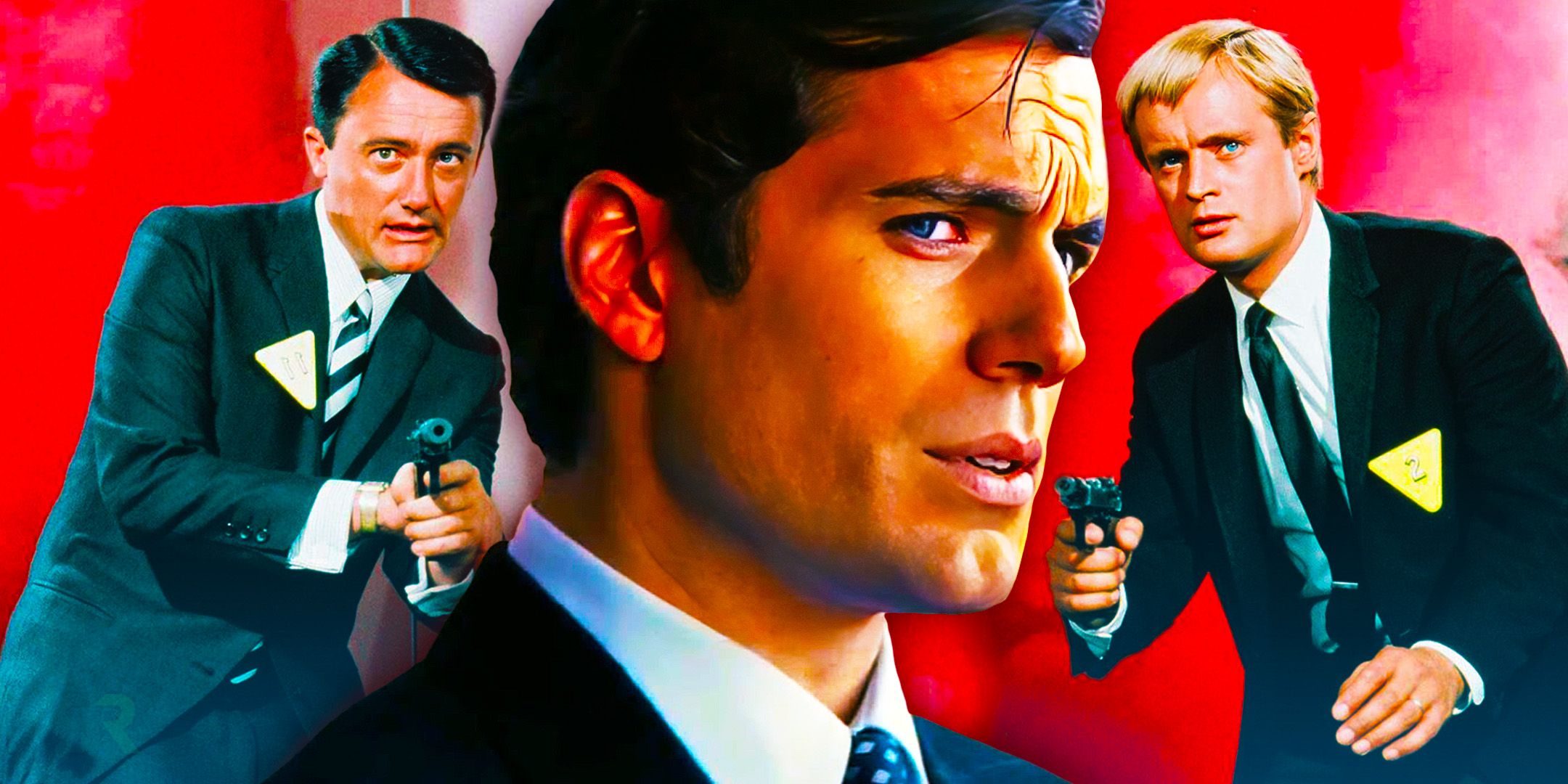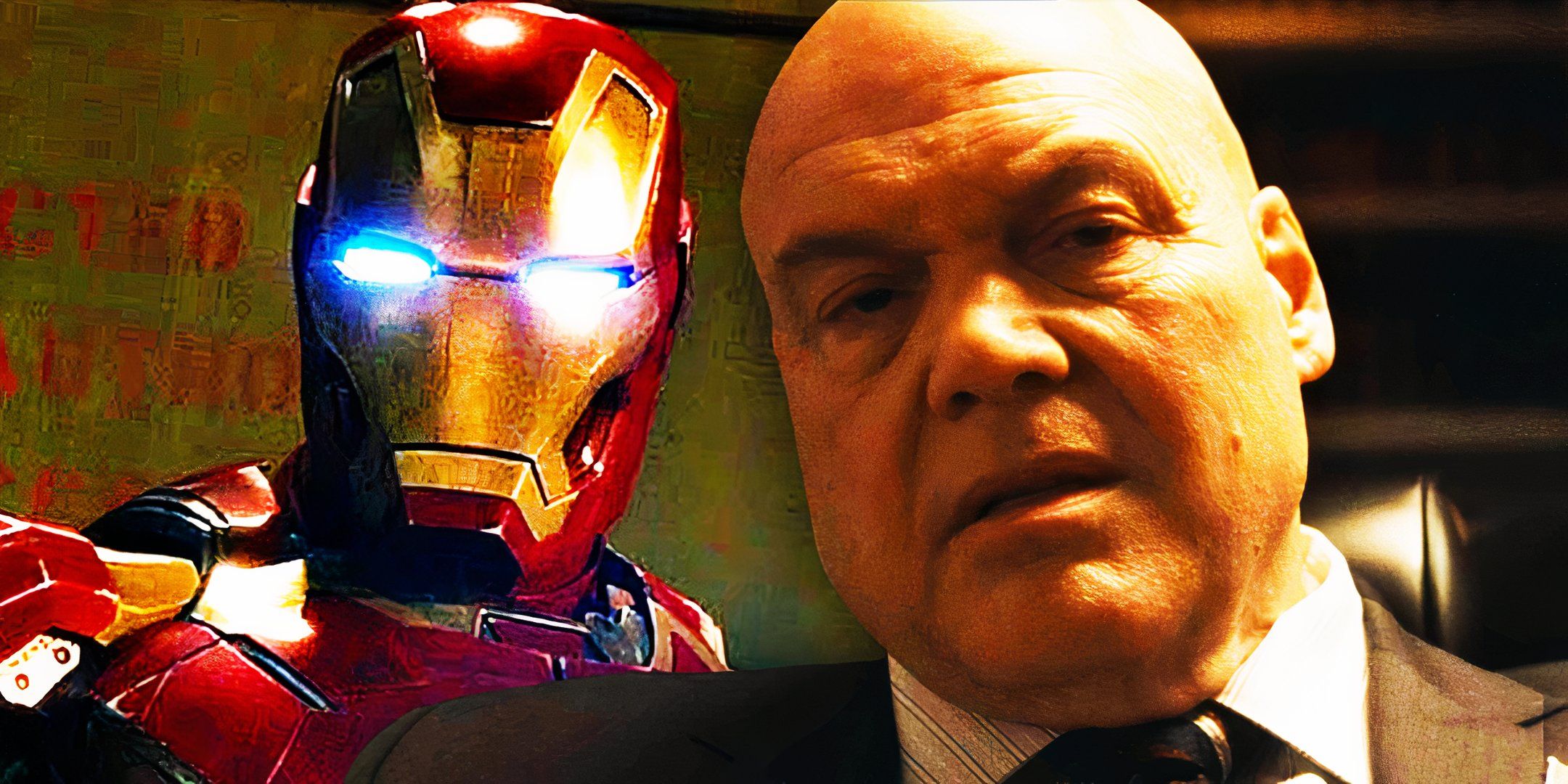10 Biggest Changes Henry Cavill’s Man From U.N.C.L.E. Movie Makes To The Original 1960s Show
Summary The Man From U.N.C.L.E. is a thrilling action movie starring Henry Cavill, inspired by the classic 1964 TV series.
Expect more physical action and fight scenes in the movie, in true Guy Ritchie style, with an added romantic subplot.
The film takes a modern approach to the 1960s spy genre, with a focus on music, character dynamics, and sleek, commercial tone.
The Man From U.N.C.L.E. was released in 2015, and though it didn't perform as well as expected at the box office, it's well remembered as one of Henry Cavill's most exciting action movies. The film is based on the original series of the same name from 1964, which ran for four seasons. Cavill plays Napoleon Solo, an American spy inspired by James Bond, and costars with Armie Hammer, who plays the Soviet KGB agent Illya Kuryakin. Both of these characters were the main partners and protagonists of the 1964 series, but the actors put their own spin on the roles.
If there ever will be a The Man From U.N.C.L.E. 2, it might be closer to the TV show than the first movie, as there are many great stories and plotlines to mine from the series.
It took over 20 years to make The Man From U.N.C.L.E. movie, and the long-awaited sequel might soon be in the works, but rumors have spread about the potential return of Cavill and the director, Guy Ritchie, for years. If there ever will be a The Man From U.N.C.L.E. 2, it might be closer to the TV show than the first movie, as there are many great stories and plotlines to mine from the series. However, The Man From U.N.C.L.E. was not afraid to diverge from the show and establish itself as a spiritual successor rather than a direct adaptation.
Related The Man From U.N.C.L.E. 2: Confirmation, Story & Everything We Know The first movie was supposed to launch a franchise but is The Man From U.N.C.L.E. 2 still on the cards? Here's what we know about the sequel.
10 No James Bond-Style Props
Ian Fleming's influence is found everywhere, but it's toned down in the prop department.
Close
It's well known that Ian Fleming, the author behind the James Bond series, was highly influential in the creation of Napoleon Solo as the American answer to James Bond. Spy and espionage movies and TV shows were some of the most popular pieces of media during the 1960s, as it was the height of the Cold War, and audiences were intrigued to see their anxieties played out onscreen. However, The Man From U.N.C.L.E. movie came out when viewer interests had shifted, and it moved away from too many direct comparisons to James Bond.
Since the movie is a period piece, whereas the show was set in its contemporary era, the use of technology is secondary to the 1960s stylization.
Many amazing James Bond movie gadgets would never work in reality, but that doesn't make them any less fun to watch onscreen. However, while The Man From U.N.C.L.E. does include some fun spy tools, they're more rooted in practicality and are secondary to the larger thrusts of physical action and chase scenes. Since the movie is a period piece, whereas the show was set in its contemporary era, the use of technology is secondary to the 1960s stylization. The movie is a throwback to bygone times, and the series was looking toward the potential future.
9 The Movie Is Action Oriented
Like all Guy Ritchie movies, The Man From U.N.C.L.E. uses physicality in dramatic and comedic moments.
Your browser does not support the video tag.
The Man From U.N.C.L.E. was not the last time Ritchie and Cavill would team up as creative partners on a project that dealt with warfare, espionage, and amazing action sequences. As soon as Ritchie signed on to helm the movie, it was obvious that it would include more fight scenes and hand-to-hand combat than the original show. Both Cavill and Hammer were more than prepared to take on this challenge, and their fight sequences are some of the most fun of the film.
Ritchie takes advantage of editing and timing, above all, in his fight choreography, and this lends itself to the heightened realism that the movie incorporates. Conversely, the series relies more heavily on the use of technology and outsmarting the villain before the conflict comes to blows. This can partially be attributed to the fact that the movie had a bigger budget and more resources, allowing for time and money to be spent on getting the action right.
8 The American-Soviet Partnership Is Explained
The inherent tension and opposing ideologies of the characters are discussed.
Close
In the film, the opposite choice is made, and when Napoleon and Illya first encounter each other, they treat each other as a potential enemy.
The meaning behind The Man From U.N.C.L.E. acronym is part of the overarching explanation for the unlikely partnership between the United States and the Soviet Union. U.N.C.L.E. stands for United Network Command for Law and Enforcement, and it's made clear in the series that the spies are working together despite their different national interests because there are greater international threats at hand. However, the series worked hard to keep politics out of the show's story and avoided too much direct tension between Napoleon and Illya about their different loyalties.
In the film, the opposite choice is made, and when Napoleon and Illya first encounter each other, they treat each other as a potential enemy. This is stopped when their respective handlers intervene and tell them that a new evil has emerged, and they must put aside their differences to stop it. While Napoleon and Illya do eventually form a grudging respect and bond as the movie progresses, it takes some time for them to trust each other.
7 Thrush Is Missing
It's one of the biggest villains that the spies ever come up against in the show.
Close
The Man From U.N.C.L.E.'s main antagonist is played by Elizabeth Debicki, and she strikes an imposing figure. However, she's a starkly different type of villain than the kind usually featured in the show. Though Debicki's character, Victoria Vinciguerra, and her henchmen are all terrifying and have dark intentions, they're more glamorous and have far-reaching influence. In the series, there are usually new villains every week, and the stories are episodic, but one of the recurring antagonists in the show is Thrush.
Thrush was created for the opposite reason than U.N.C.L.E., to take over the world and subjugate its population. This makes Thrush an easy and relatively one-dimensional antagonistic force that can always be positioned as the ultimate evil when compared to U.N.C.L.E.'s goodness and honesty. It was a welcome surprise that the movie didn't include Thrush and chose to take a more nuanced approach to the forces working against Napoleon and Illya. It wouldn't be surprising for a future movie sequel to take on Thrush and adapt it for the contemporary era.
6 Gaby Is An Addition Made By The Film
Alicia Vikander makes a strong addition to the male-centric storyline.
Close
While there were plenty of one-off female characters in the show, few had the importance or skill of Gaby, who rounds out the partnership between Illya and Napoleon in the movie. Played by Alicia Vikander, Gaby is not featured in the original series. However, her addition to the film makes sense, as without her, the movie could easily fall into the territory of a buddy comedy. While there's nothing wrong with this, it would detract from the overarching theme of the story, and the inclusion of a strong female character was necessary.
She has her own story and her own motivations for helping U.N.C.L.E. and joining the team.
There are many dated elements from The Man From U.N.C.L.E. show, which is to be expected, as this is a common problem with shows from the past. However, even though the movie is set in the same era, it does make some strides in creating a more inclusive and contemporary take on the spy genre. Gaby is not just a damsel in distress or a love interest. She has her own story and her own motivations for helping U.N.C.L.E. and joining the team.
5 The Movie Is Characterized As A Prequel
While the show jumps into the action, the movie shows Napoleon and Illya meeting.
Close
A few moments of backstory are given to both Illya and Napoleon at the start of the film. After this, the audience learns more about their motivations and personalities as the story progresses. In the show, Napoleon and Illya appear across the world, helping innocent people wherever they can, and it's almost as if they've been doing this their entire lives. The movie diverges from this by having the partnership be unsteady and on the verge of collapse throughout the film, as it's the origin story of their relationship.
However, now that the prequel part of the film series is over, there's plenty of room for Napoleon and Illya to go to new and exciting places in additional projects now that their dynamic is well-established. Some of this will come down to what actors would be willing to return for a potential sequel. The movie will likely move on and focus on new storylines the way the James Bond movies do. Even if Cavill is the only performer who reprises his role, this will be enough to carry a new movie.
4 Napoleon Solo Is Less Americanized
Napoleon is not the American everyman, but a more suave and debonair type.
Close
Napoleon is an interesting figure, as his criminal past informs how he relates to the world and his loyalty to his country.
Even though Napoleon Solo was created to be the American version of James Bond, the show made sure to lean into his American traits and demonstrate that he wasn't a carbon copy of Fleming's character. Napoleon is an interesting figure, as his criminal past informs how he relates to the world and his loyalty to his country. In the movie, Napoleon is able to work with Illya because he's less concerned about the ideology of his country than with his own self-interests.
Cavill's acting choices are much closer to a classic Hollywood leading man like Humphrey Bogart. This creates a more international and worldly archetype rather than the traditional U.S. CIA agent. Today, the American espionage genre is defined by characters like Jason Bourne and Ethan Hunt. However, Cavill's Napoleon is a different type of spy and action hero than either of these men. However, his work as Napoleon works well for the movie and fits into the larger tone better than a stereotypically American performance.
3 Romance Is A Much Larger Part Of The Movie
Gaby and Illya have the most compelling romantic dynamic.
Close
Even though Napoleon is characterized as the womanizer and the overall protagonist of the film, it's Illya who gets the love interest in The Man From U.N.C.L.E. movie. While Napoleon has no trouble turning heads, the more traditional and family-oriented Illya falls for the unconventional and uninterested Gaby. However, their dynamic becomes flirtatious almost immediately, and it's their relationship that motivates Illya to save Gaby at the climax of the film. This interpersonal connection is not something that drives the characters in the series.
Vikander and Hammer have good chemistry, and the combative enemies-to-lovers trope that the movie goes for works well within the overall themes of the story. Though this explicitly romantic storyline was a slightly surprising addition, as spies are often defined by their lone-wolf mentality, it was a welcome change. Illya's affection for Gaby makes the audience more willing to sympathize with him, and it sets up a potential romantic arc for the future. However, it does beg the question of when Napoleon will get a love interest of his own.
2 Music & Scoring Are Elevated In The Movie
The use of 1960s musical cues and sweeping scoring is a fun cinematic element.
Close
The Man From U.N.C.L.E. soundtrack was a large part of how the tone and setting of the 1960s were established by the movie. Though the costuming, technology, and current events all firmly set the movie in the past, the music is what transports the audience into the film's world. The original theme from the TV show is iconic to viewers who grew up watching the series, but for modern audiences, the use of this is less important. Adding new music with more expansive scoring makes the movie feel like a cinematic event.
The rhythmic editing that his movies are famous for lends itself to incorporating classic songs and newly composed pieces throughout the film.
Needle drops can be an overused element of modern cinema, but Ritchie understands where to put them and when to include original scoring. The rhythmic editing that his movies are famous for lends itself to incorporating classic songs and newly composed pieces throughout the film. Combining the great songs that Ritchie used for the film's pivotal moments with the action and choreography of the film is what makes so many of the scenes memorable.
1 The Humor & Tone Are Less Campy
The movie is more interested in commercial success rather than subversive storytelling.
Close
The campy elements of the original show are often unintentional and are the result of looking back on a piece of old media through a contemporary lens. However, this doesn't make it less fun and interesting to experience the melodrama and unrealistic aspects of the TV show. While there are plenty of outlandish aspects of the movie, it leans away from camp and smooths out the wrinkles of the show's story. It's a sleek and modernized version of The Man From U.N.C.L.E. from the start.
Unfortunately, it's easy to miss some of the classic pitfalls of 1960s television when watching the 2015 movie because it sets the tone for the story so well. Future iterations of the franchise would do well to lean into the exploration of camp and even deeper stylization outside of the clothes and set design. By trying to attract a modern audience to the theater to watch the movie, some of the original charm of the TV show was lost.











COMMENTS